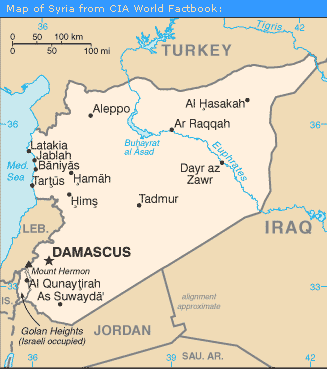As in Iraq, the pan-Arab Ba’ath party gained strength in Syria in the 1950s and 1960s by building on strong appeals to Arab nationalism. Syrian Ba’athists came to power through a military coup in 1963, and Syria has been under an official state of emergency since then. Through its military regime and the constitution — which guarantees Ba’athists half the seats in the People’s Council — the party’s contol has not been seriously threatened. For 30 years, General Hafez al-Assad ruled with an iron fist not only in Syria but, to a large degree, in Lebanon; Syrian troops stayed there for 15 years following Lebanon’s civil war. Assad died in 2000, and his son Bashar immediately assumed the presidency. Many hoped that the Western-educated younger Assad would bring immediate reforms to Syria, and the results have been mixed. Some note that he has released some political prisoners and supported the publication of Syria’s first independent newspaper; others are disappointed that he made no efforts to change course in Lebanon or to amend the constitution. Syria continues to oppress its Kurdish minority (10% of the population), and Kurdish efforts at autonomy in Iraq will not likely hearten Assad. Meanwhile, Assad must pay attention to the status of another Syrian minority group: his own. Assad belongs to the Alawite sect, a group that barely outnumbers the Kurds in Syria; some Muslims do not even consider Alawites to be Muslim. Regardless of Assad’s intentions, Syria has seen recent change. Bowing to pressure within and beyond Lebanon, in April 2005 Syria withdrew the last of its soldiers from Lebanon. Then, hardly a month later, the Ba’ath party eased the country’s 42-year-old state of emergency and allowed for the creation of some new political parties.
- Previous: Saudi Arabia
- Next: Turkey



